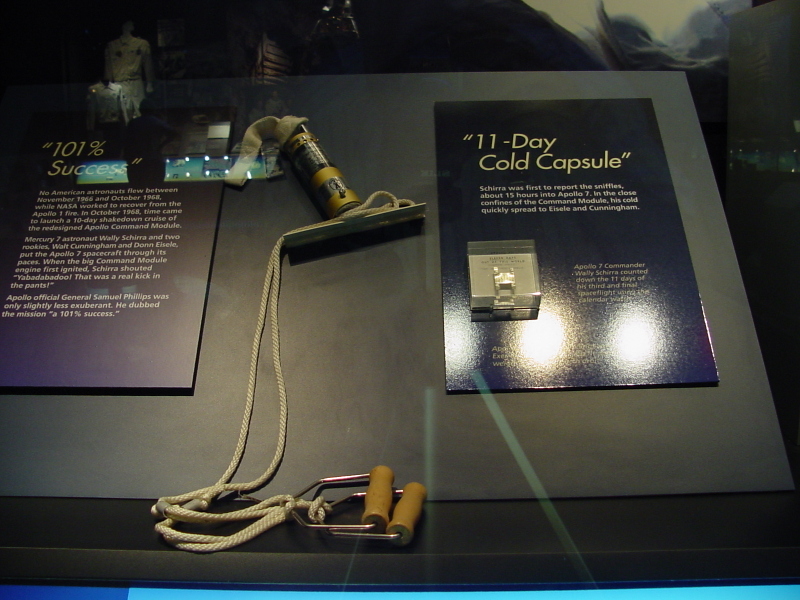| Prev |
heroicrelics.org Astronaut Hall of Fame Site Index Apollo Artifacts Gallery |
Next |
dsc05544.jpg
More Apollo 7 artifacts: an Exer-genie (left) and calendar watch (right).
The sign at left read:
"101% Success"
No American astronauts flew between November 1966 and October 1968, while NASA worked to recover from the Apollo 1 fire. In October 1968, time came to launch a 10-day shakedown cruise of the redesigned Apollo Command Module.
Mercury 7 astronaut Wally Schirra and two rookies, Walt Cunningham and Donn Eisele, put the Apollo 7 spacecraft through its paces. When the big Command Module engine first ignited, Schirra shouted, "Yabadabadoo! That was a real kick in the pants!"
Apollo official General Samuel Phillips was only slightly less exuberant. He dubbed the mission "a 101% success."
The sign at right read:
"11-Day Cold Capsule"
Schirra was first to report the sniffles, about 15 hours into Apollo 7. In the close confines of the Command Module, his cold quickly spread to Eisele and Cunningham.
Apollo 7 Commander Wally Schirra counted down the 11 days of his third and final spaceflight using this calendar watch.
Apollo 7 Pilot Walt Cunningham used this Exer-genie device to keep fit during 11 weightless days in Earth orbit.
It might have been nice if the two adjacent signs had agreed on the length of the mission: The "101% Success" sign states a mission duration of 10 days, while the "11-Day Cold Capsule" indicates, well, 11 days.
Officially (according to the Apollo 7 Press Kit), Apollo 7 was an "open-ended mission up to 11 days." Actual mission duration was 10 days, 20 hours, nine minutes, three seconds.

| Time picture taken | Mon Jun 14 12:17:06 2004 |
| Location picture taken |
Museum Gallery Astronaut Hall of Fame Titusville, FL |
| Prev |
heroicrelics.org Astronaut Hall of Fame Site Index Apollo Artifacts Gallery |
Next |